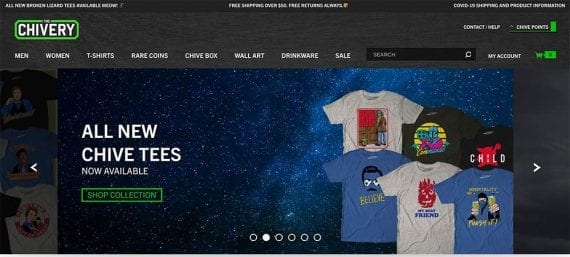Technology, software, and business innovation are enabling the print-on-demand industry to expand from second-rate t-shirts, mugs, and wall art to quality manufacturing-as-a-service solutions.
Print-on-demand services haven’t always had the best reputation. When these services first sold online several years ago, some vendors would take a single, relatively low-resolution image from the customer and stretch it to fit anything from a t-shirt to a beach towel. These early services could also be slow, requiring a week or more to print and ship an item.
Even now, circa 2021, the term “print-on-demand” can be used to describe a tiny company producing prints on a $12,000 machine in a garage to an enterprise apparel operation using a Kornit Avalanche HD6 direct-to-garment printer that costs hundreds of thousands of dollars.
Tech, Innovation
Print-on-demand is an emerging and desirable sourcing solution for some commerce businesses.
This is happening, in part, because of technology. Machines such as the aforementioned Kornit Avalanche can produce high-quality printed t-shirts in minutes. And the cost to print one t-shirt or artwork is roughly the same per-unit as printing 10,000.
Software, too, is improving. Print-on-demand services use software to ensure that the design will work well on a specific product. So rather than using a single design for a t-shirt and a beach towel, separate, albeit similar, designs are associated with each.
Finally, business innovation is playing a role. Some print-on-demand providers are networks of several manufacturers working together. A single ecommerce order of home decor, coffee mugs, and t-shirts might be printed at three facilities owned by three contract manufacturers.
Offering Print-on-demand
Offering print-on-demand services is not suitable for every business.
But there are many times when reasonably well-funded startups, established retailers, or brands can use print-on-demand services to augment or even replace portions of their supply chains.
Brian Rainey is CEO of Gooten, an enterprise manufacturing-on-demand company. He suggests that businesses look at how they are sourcing and selling merchandise and ask, “What is the application of print-on-demand within a broader portfolio [of product offerings]?”
Rainey gave a few examples of when printing or manufacturing on-demand could make sense.
Small businesses. “Manufacturing on-demand is ideal for direct-to-consumer businesses,” said Rainey. “You’re not trying to find and acquire products. You’re creating an audience, a brand, and utilizing manufacturing on-demand as one leg of your production and logistics plan.”
Small businesses that use manufacturing on-demand can focus on creating their brand, generating site traffic, increasing average order value, and boosting conversion rate — none of which are easy.
Online content brands. “We’ve talked to major online brands,” Rainey said, “such as The Chive out of Austin, Texas. They used to do 15 virtual designs and ask their audience, ‘Which design do you guys like?’ And then the winning design or two would get screen printed and put in inventory. Then they would try to sell them.”
There is, however, a few problems with this approach.
First, it depends on a small set of the brand’s audience to select the products. Second, some designs with audience support will not be made or monetized. And third, it leaves the brand guessing how many items to print, creating a potential overstock.
Printing or manufacturing on-demand can address all of these issues. Thus a popular YouTuber, a Twitch streamer, or a content company such as The Chive can offer more choices and products.

The Chive is an online content brand and store. Gooten works with The Chive for print-on-demand services.
Enterprise brands and retailers. According to Rainey, even established retailers with long-standing manufacturer relationships and their own warehouses could benefit from including on-demand production in their mix of sources and suppliers.
He cites advantages, which include:
- Offering customized, personalized, and long-tail products,
- Reducing investments in inventory,
- Freeing-up warehouse space for high-volume or high-profit items,
- Rapid scaling for peak periods,
- Testing new products,
- Diversifying suppliers.




